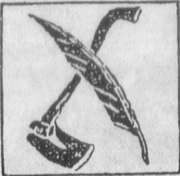National People's Party (Indonesia)
The National People's Party (Indonesian: Partai Rakyat Nasional, PRN) was a nationalist political party in Indonesia.[1] The party was initially called Indonesian National Party - Merdeka ('Freedom'), and was formed on 23 July 1950 after a split within the Indonesian National Party (PNI). The divisions with the PNI had appeared at the party congress in May the same year, when Sidik Djojosukarto's followers (whom the founders of PNI-Merdeka/PRN opposed) had emerged victorious (after the split the PNI labelled the PRN as 'right-wing' and 'capitalistic'). Dr. Djody Gondokusumo was the chairman of the party.[2][3]
National People's Party Partai Rakyat Nasional | |
|---|---|
 | |
| Chairman | Djody Gondokusumo |
| Founded | 23 July 1950 |
| Dissolved | April 1961 |
| Split from | Indonesian National Party |
| Ideology | Democracy Nationalism |
When the People's Representative Council was established following the dissolution of the United States of Indonesia and the establishment of Indonesia as a unitary state, the PRN was given 10 legislative seats.[4] In October 1950, the PRN was the only non-government party to support the Natsir cabinet when a vote of confidence was held in parliament.[5] Later in the same month, the party adopted the name PRN.[3]
As of 1951 the party claimed to have two million members, although that figure was probably highly inflated.[6]
In March 1951 the party joined ten other parties, including the Communist Party of Indonesia (PKI), in the Consultative Body of Political Parties, a nationalist coalition established as form for the PKI and the Indonesian National Party (PNI) to work together. However, the PNI refused to join the body, making it ineffective.[1]
When the first Ali Sastroamidjojo cabinet was formed in 1953, the PRN leader Dr. Djody Gondokusumo was named Minister of Justice. In November 1953 he was joined by the PRN politician I Gusti Gde Rake, who became Minister of Agrarian Affairs.[7]
In the 1955 parliamentary election, the PRN gained 242,125 votes (0.64% of the national vote), and was awarded two seats in the 257-seat parliament. The PRN joined the National Progressive Fraction, a body of ten MPs from Java. In the Constitutional Assembly election held later the same year, it won 220.652 votes (0.58%), resulting in 3 seats in the 514-seat Constitutional Assembly.[8] [9]
In 1956 the party suffered a split, as there was a division between the Javanese leadership (loyal to Dr. Gondokusumo) and a group of non-Javanese leaders (a headed by Bebasa Daeng Lalo). The Bebasa Daeng Lalo-faction counted on the support of two PRN ministers in the Burhanuddin Harahap cabinet, F. Laoh and Gunawan.[10]
In late 1956 the PRN expressed support for President Sukarno's konsepsi, which would lead to the establishment of the Guided Democracy. However, in January 1960 a new law came into effect that placed severe restrictions on the ideology, conduct and membership of political parties. The PRN failed to meet these requirements, and was dissolved along with all but ten of Indonesian's political parties.[11][12]
Women's wing
The women's wing of PRN was known as Wanita Nasional ('National Woman'). As of 1960, Wanita Nasional claimed to have 90 branches.[13]
Notes
- Feith 2009, p. 102.
- Kementerian Penerangan RI 1951, p. 184.
- Feith 2008, p. 144.
- Feith 2008, pp. 128 189.
- Feith 2008, p. 153.
- Feith 2008, p. 125.
- Feith 2008, pp. 338-339.
- Sekretariat Jenderal KPU 2010, p. 35.
- Feith 2008, p. 472.
- Feith 2008, p. 491.
- Feith 2008, pp. 543-544, 593.
- Mortmer 1974, pp. 118-119.
- Martyn 2004, p. 219.
References
- Feith, Herbert (1971) [1957]. The Indonesian Elections of 1955. Ithaca: Cornell University.
- Feith, Herbert (2008) [1962]. The Decline of Constitutional Democracy in Indonesia. Singapore: Equininox Publishing (Asia) Pte Ltd. ISBN 978-979-3780-45-0.
- Feith, Herbert (2009) [1958]. The Wilopo Cabinet, 1952-1953: A Turning Point in Post-Revolutionary Indonesia (Reprint ed.). Equinox Publishing. ISBN 978-602-8397-15-5.
- Kementerian Penerangan Republik Indonesia (1951). Kepartaian di Indonesia (PDF). Jakarta: Dewan Perwakilan Rakyat Republik Indonesia.
- Martyn, Elizabeth (2004). The women's movement in post-colonial Indonesia: gender and nation in a new democracy. Taylor & Francis. ISBN 978-020-3164-22-8.
- Mortimer, Rex (1974). Indonesian Communism under Sukarno: Ideology and Politics, 1959-1965. Ithaca: Cornell University Press. ISBN 0801408253.